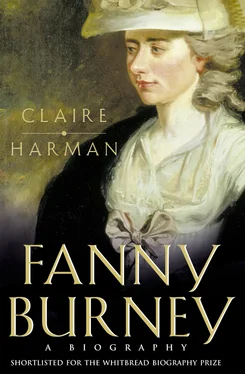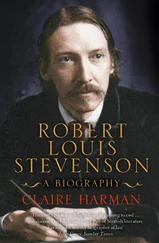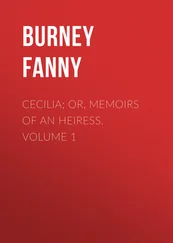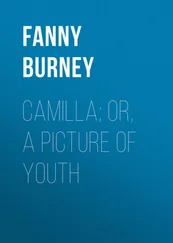without stores to amuse, or powers to instruct, though with a full persuasion that she is endowed with wit, because she cuts, wounds, and slashes from unbridled, though pent-up resentment, at her loss of adorers; and from a certain perverseness, rather than quickness of parts, that gifts her with the sublime art of ingeniously tormenting. 70
Mrs Burney had plenty of fuel for sexual jealousy, not just at home among her stepdaughters (whom William Bewley had once described as Charles Burney’s ‘seraglio’) but among the Doctor’s pupils too. No doubt his male friends teased Charles Burney about his access to an endless supply of nubile young women, and perhaps not without cause: he appears in James Barry’s 1783 allegorical painting The Triumph of the Thames surrounded by naked Nereids, and in C.L. Smith’s caricature ‘A Sunday Concert’ in an obscenely suggestive pose in front of John Wilkes’s daughter Mary. Burney was clearly susceptible to female charms: he became openly infatuated with the lovely Sophy Streatfield after her lover Henry Thrale was dead, to the extent that Mrs Thrale felt he was making a fool of himself. 71 Even Fanny noticed and joked about her father’s ability to make ‘conquests’, though she saw it mostly as proof of his charm. But a wife would be likely to view such persistent ‘charm’ rather differently. Elizabeth Burney may have had much more to put up with in her marriage than we know.
*Fanny’s impression differs radically from John Strype’s description of St Martin’s Street in 1720 as ‘a handsome, open Place, with very good Buildings for the Generality, and well inhabited’. 52
*It was later renumbered 35. The house was condemned in 1913 and the site is now occupied by the Westminster Reference Library.
†This room in the Burneys’ house has been reconstructed at Babson College, Wellesley, Massachusetts, using the original panelling and mantelpiece. 55
From the origin of her first literary attempt, [she] might almost be called an accidental author .
Fanny Burney, Memoirs of Doctor Burney 1
Fanny’s diary was not addressed to ‘Nobody’ for long. Craving news from town and the company of his dear Burney girls, Samuel Crisp had developed an apparently insatiable appetite for their letters, and singled out Fanny’s as the best. His attention was extremely gratifying to the ‘little dunce’ and encouraged her to invest time and effort in the correspondence. Her diary gradually modulated into a series of journal-letters to the hermit of Chesington which Crisp felt free to circulate to his sister and her friends.
While it stimulated Fanny to have a discerning and appreciative audience (in a way that addressing passive ‘Nobody’ could never do), there was of course a danger that these semi-public letters might become self-conscious. Fortunately, Crisp was not only a forthright man but astute, and foresaw the kind of inhibitions to which Fanny might be prey. ‘I profess there is not a single word or expression, or thought in your whole letter,’ he wrote in the winter of 1773, when their correspondence was just taking root, ‘that I do not relish’:
– not that in our Correspondence, I shall set up for a Critic, or schoolmaster, or Observer of Composition – Damn it all! – I hate it if once You set about framing studied letters, that are to be correct, nicely grammatical & run in smooth Periods, I shall mind them as no others than newspapers of intelligence; I make this preface because You have needlessly enjoin’d me to deal sincerely, & to tell You of your faults; & so let this declaration serve once for all, that there is no fault in an Epistolary Correspondence, like stiffness, & study – Dash away, whatever comes uppermost – the sudden sallies of imagination, clap’d down on paper, just as they arise, are worth Folios, & have all the warmth & merit of that sort of Nonsense, that is Eloquent in Love – never think of being correct, when You write to me. 2
Crisp granted Fanny a licence to be natural, and the benefits were enormous. He encouraged her to entertain him, not with anything fanciful or affected, but with the events of her everyday life, written in her everyday language, really as if she were talking to him. It was in their degree of deviation from ‘nicely grammatical’ writing that he would judge the vitality of her letters. Uneducated Fanny had appealed to the family monitor to correct her faults, and he had replied that she wasn’t to give her style a moment’s notice.
‘Dash away, whatever comes uppermost’: Fanny’s letters to Crisp became studiedly informal, making use of character sketches and long passages of dialogue as a substitute for straightforward chronicling. The success of the formula must have influenced her decision to cast the latest of her ‘writings’ in epistolary form, and the sheer familiarity of writing to Crisp suggested the story’s central correspondence between a young lady in the city (Evelina) and an old mentor in the sticks. Writing a novel as a series of letters suited the author’s circumstances, too. In a household where there was little privacy, the excuse of ‘writing a letter’ would have helped keep her compositions secret.
The epistolary novel was the most popular form of the day, and the trademark of Fanny’s literary hero, Richardson, though in Evelina she uses it more cleverly than he. Having, like Richardson, presented herself as the editor of the letters (thereby setting up the mild pretence of them being real), she ‘edits out’ parts of the correspondence, plants references in the text to ‘missing’ letters, has letters cross in the post, get diverted, forged, delayed (notably in the case of the one from the heroine’s dead mother, pivotal to the resolution of the plot). The model of Fanny’s real correspondence with Crisp was most valuable, though, in discouraging her from attempting too ‘literary’ a style. Evelina’s breathless note to her guardian on her arrival in London, for instance, has an irresistible realism:
This moment arrived. Just going to Drury-Lane Theatre. The celebrated Mr. Garrick performs Ranger. I am quite in extacy. So is Miss Mirvan. How fortunate, that he should happen to play! We would not let Mrs. Mirvan rest till she had consented to go; her chief objection was to our dress, for we have had no time to Londonize ourselves; but we teazed her into compliance, and so we are to sit in some obscure place, that she may not be seen. 3
Evelina bears none of the marks of having been worked on for up to ten years, though in the Memoirs the author asserts that much of the story had been ‘pent up’ in her head since the time of the composition of ‘Caroline Evelyn’, the manuscript novel destroyed in Poland Street in 1766 or 1767. 4 A document in Charlotte Barrett’s hand 5 (but presumably written under the supervision of her aunt) adds that the earlier story had featured several characters who reappear in the ‘daughter’ novel: Lady Howard, Mr Villars, Miss Mirvan, Sir John Belmont and Madame Duval. These characters were so real to Fanny that she couldn’t help revolving their circumstances and personalities long after the manuscript containing their history had ceased to exist. ‘My bureau was cleared,’ she wrote, many years later, ‘but my head was not emptied.’ 6
It is likely that Evelina was one of the ‘writings’ Fanny Burney mentions in her diaries of 1770, 1771 and 1772. The two following years were burdened with copying as Dr Burney hurried to finish the first volume of his History , and it was probably only after the publication of that book in 1775 that Fanny had much time for her own work. In the early stages, there was little motivation to write the story down, except perhaps a desire to circulate a readable manuscript among her siblings and the Chesington Hall set. ‘Writing, indeed,’ as Madame d’Arblay confessed later, ‘was far more difficult to her than composing.’ 7 Writing down also meant pinning down, and an end to the pleasurable composing process.
Читать дальше












